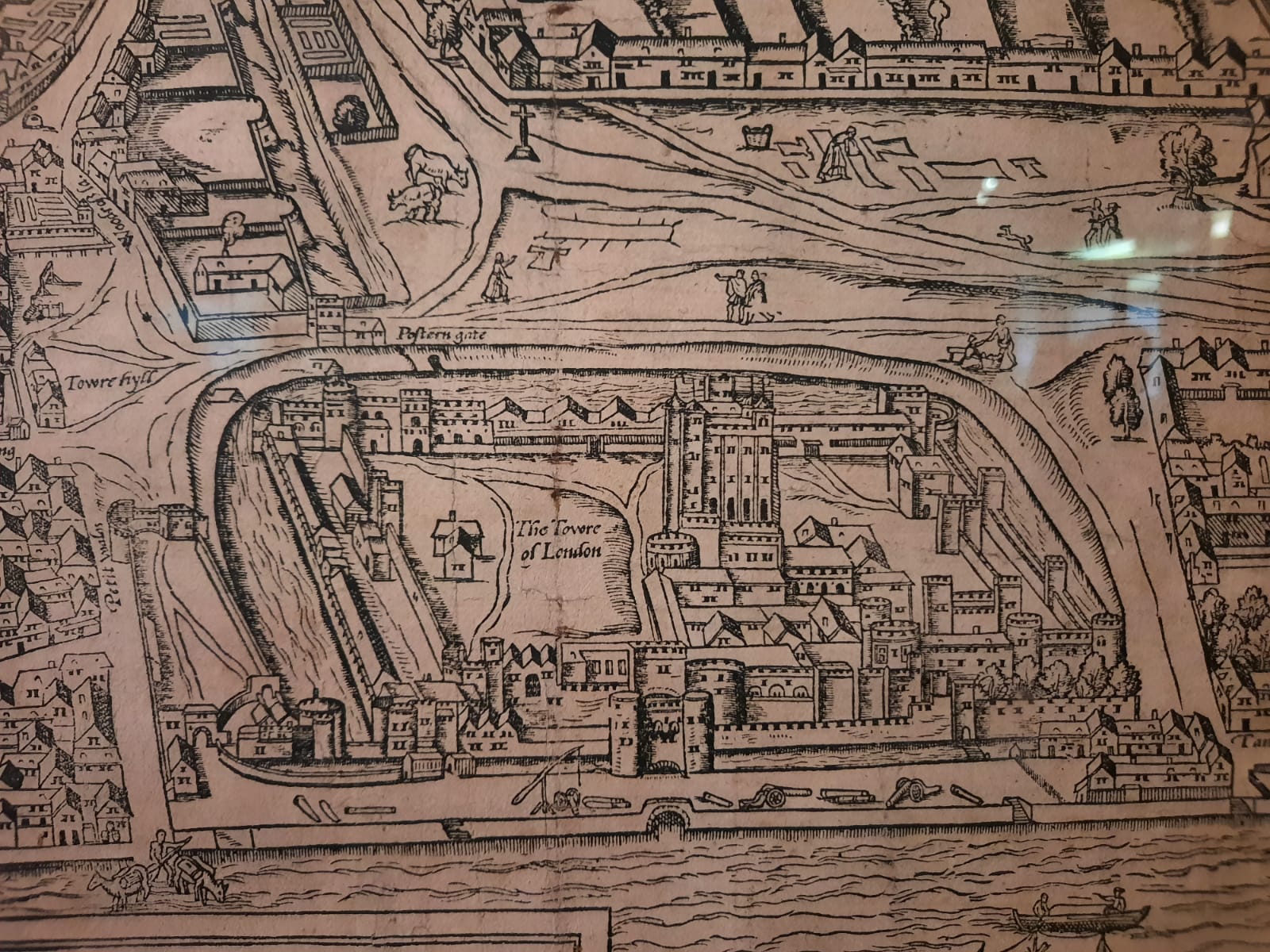Magnificent Maps Of London – London Metropolitan Archives
A review of Magnificent Maps of London – a rare weekend opening is a great chance to see this exhibition at the London Metropolitan Archives in Clerkenwell.
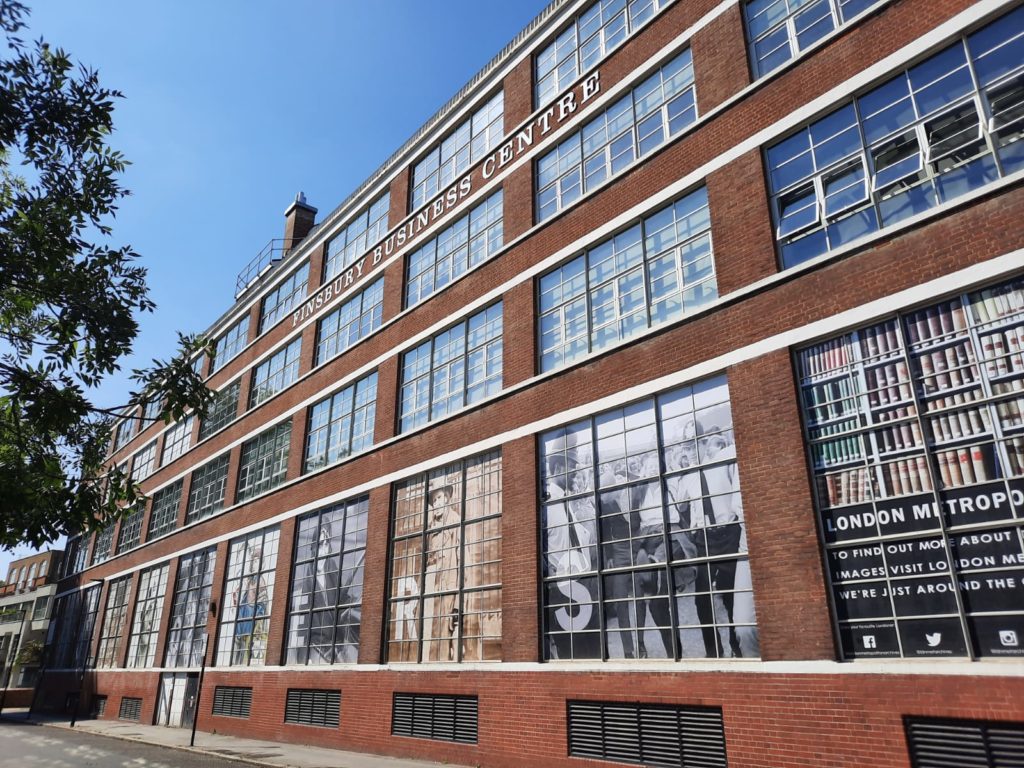
London Metropolitan Archives
Judge me if you will, but I’m such a museum geek I keep a list of exhibitions I would like to see in the back of my diary. I’ve had the London Metropolitan Archives on there before, but unfortunately their opening hours are normally only on weekdays. With a full time job, this makes it a little difficult to get there and see what’s on view. But my personal urban geographer love maps, and I love exploring new places, so I was pleased recently to see there were some dates for summer weekend openings.
With tickets (virtually) in hand, we headed off on a Saturday towards Clerkenwell. A historic part of London, this is also where we visited the Museum of the Order of St John a while back. The London Metropolitan Archives aren’t in quite such a historic building, but there’s still a bit of history to it. We found out during a tour that the main building is a steel-framed former printing works. The strong frame helps it to take the weight of all the archival stores.
The London Metropolitan Archives is a pan-London collection. This means that, unlike local council archives, what they store spans the entire city. The collection includes the archives of businesses, schools, charities, hospitals, and other organisations. There are books, documents, films, photographs, microfilm and microfiche, and more. The oldest document dates to 1067! You can imagine I was quite pleased, then, when it turned out the summer opening included a behind the scenes tour as well as a curator’s tour of the temporary exhibition.
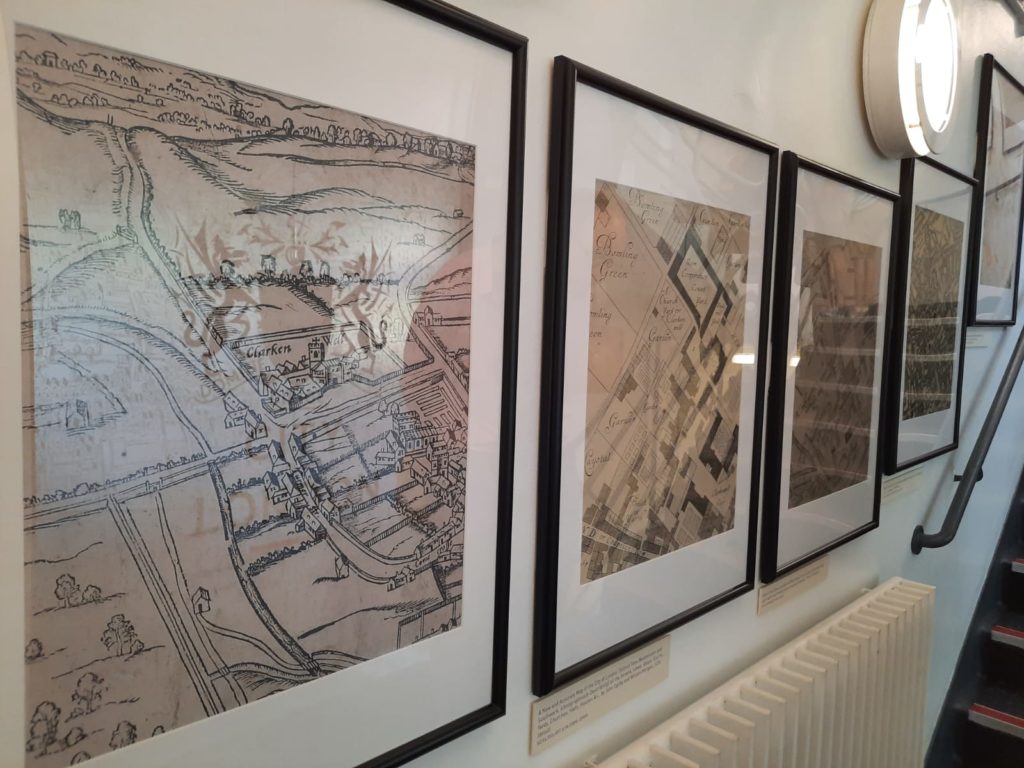
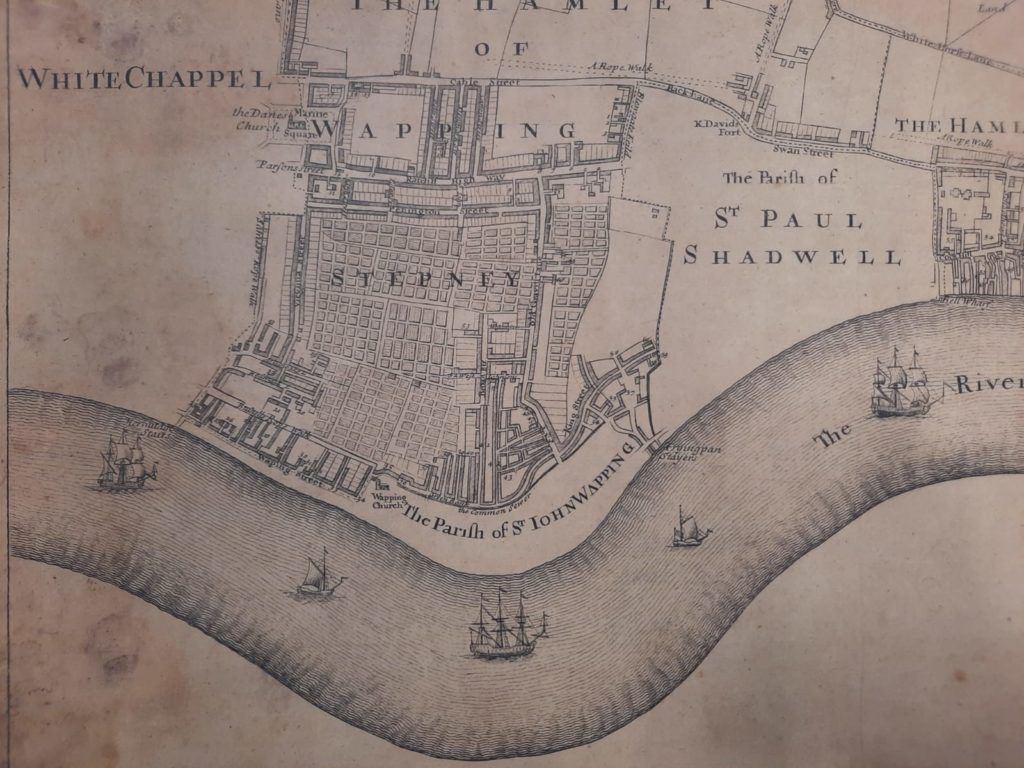

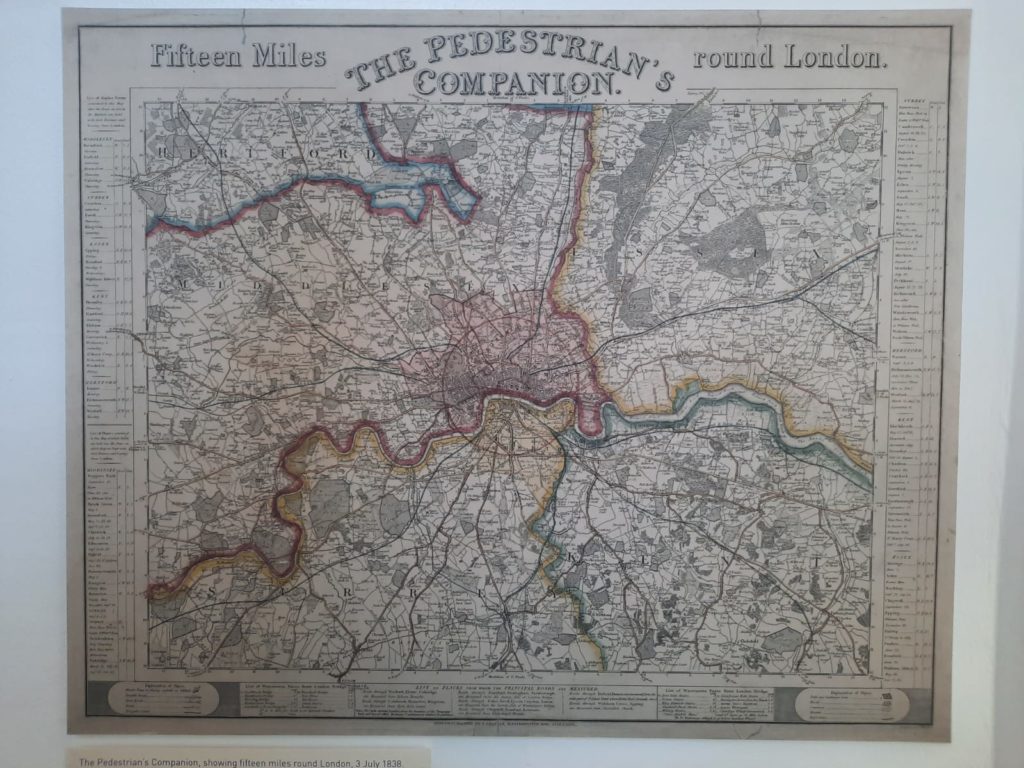

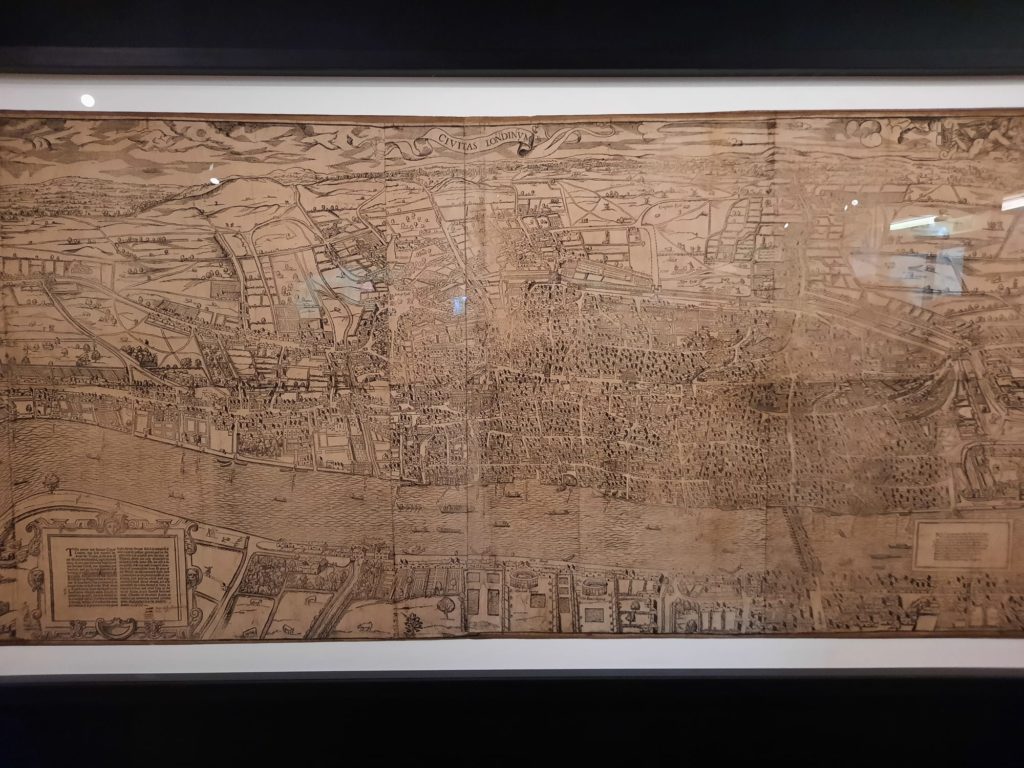
Magnificent Maps Of London
The temporary exhibition currently on at the London Metropolitan Archives is Magnificent Maps of London. It does what it says on the tin – a selection of maps of our fair city. Interestingly, a higher proportion of the maps were reproductions than I had expected. There’s a good reason for this. Maps, particularly large scale/high quality maps, have not always been produced with physical navigation in mind. Historically they were expensive things to make, and therefore often adopted a subscription model. Payments for the first sheet of a map would fund the creation of the next one, and so on. As a result, the London Metropolitan Archives own a lot of maps which are bound into volumes rather than unfolding into something ready to display. The large reproductions are the result of careful work to photograph and join the various sheets together.
The idea behind the exhibition is more to explore the function and development of the maps themselves than the growth of London as a city. The development of the city is a by-product, sure, but Magnificent Maps of London takes a cross-section of depictions of the city, and thinks about the purposes of the maps. Some of the earliest examples, for instance, relate to legal claims over specific plots of land. Elsewhere there are maps used to conceptualise communities in London, disease outbreaks, or track racist attacks. There are pleasant representations of the homes of some of London’s wealthier residents, and creative reimaginings of the Tube map, station names swapped out for the names of notable Black residents. There are early tourist guides to London, and traveller’s maps which follow a single road, forsaking all extraneous areas beyond.
I liked this approach, because it mirrors how I show interest in a subject. Even when faced with a thorough and meticulous historic charting of a subject I will find myself drawn to objects of curiosity, and more interested in the story the object tells us about its use and creation than the object itself.

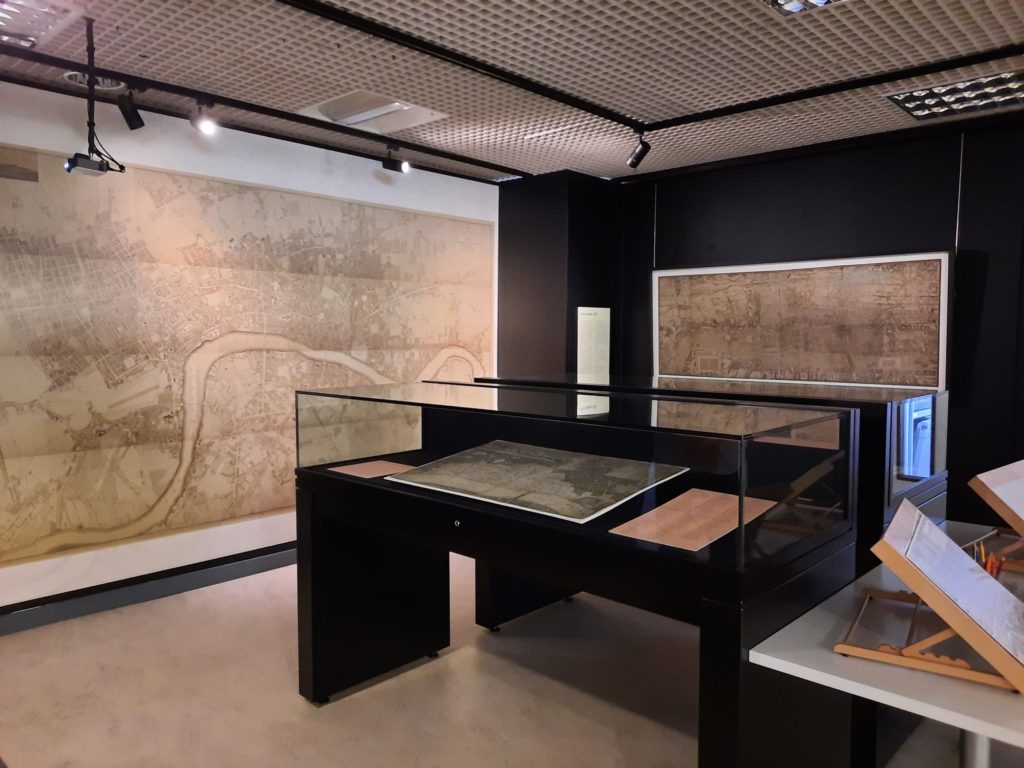
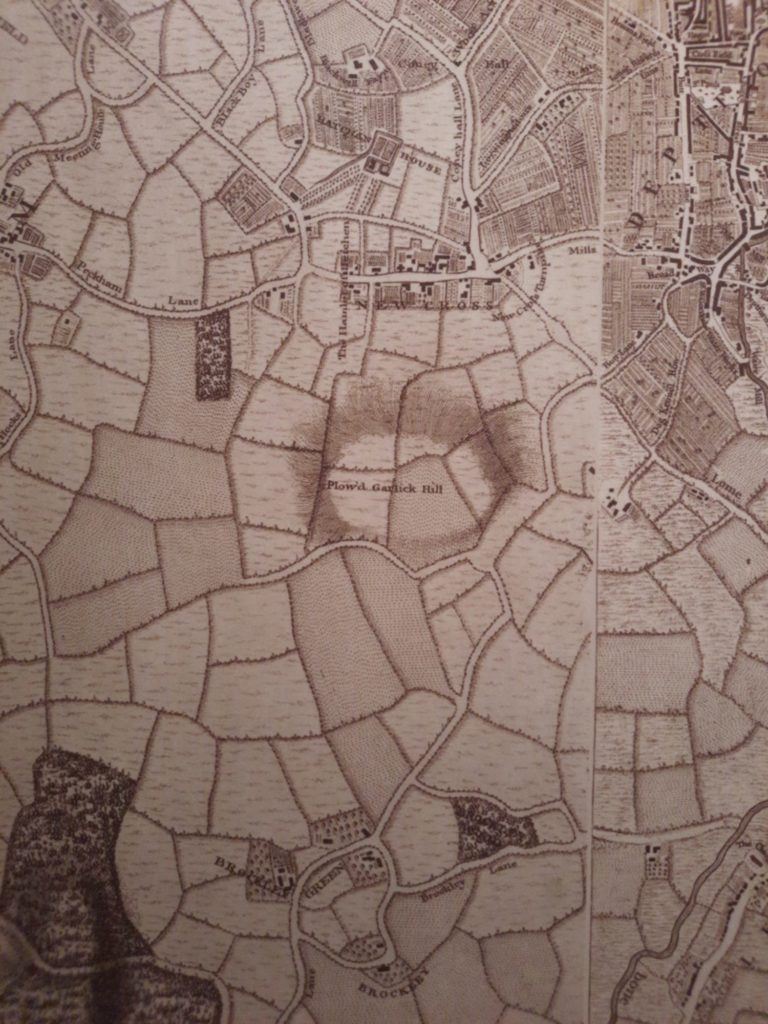

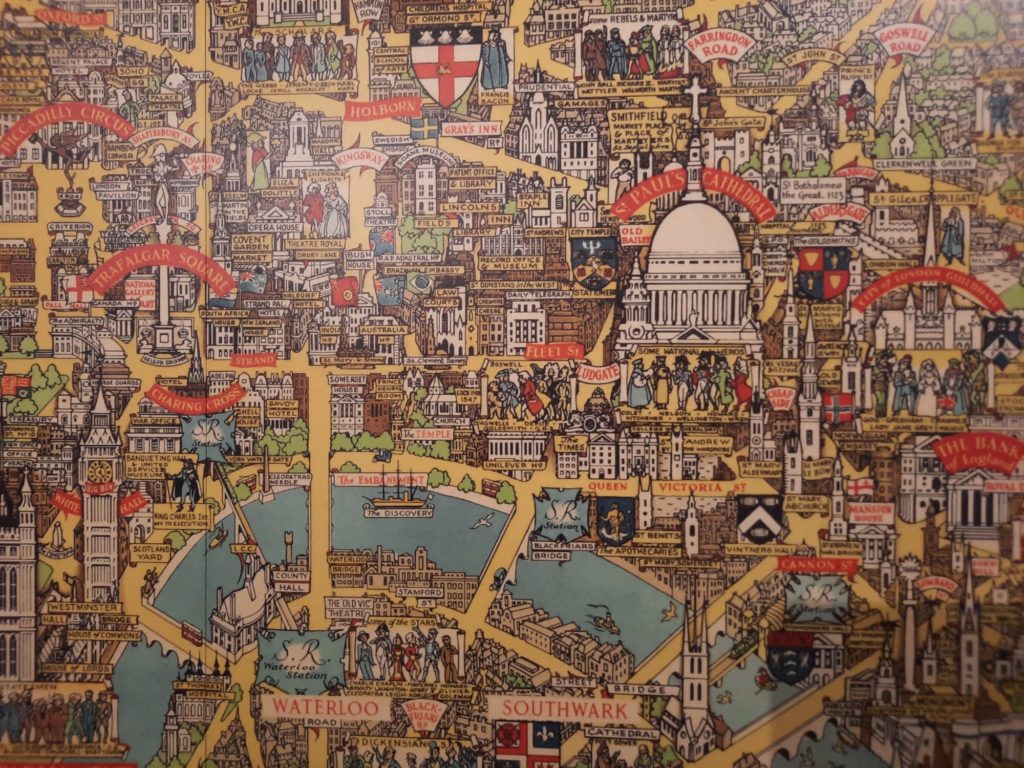
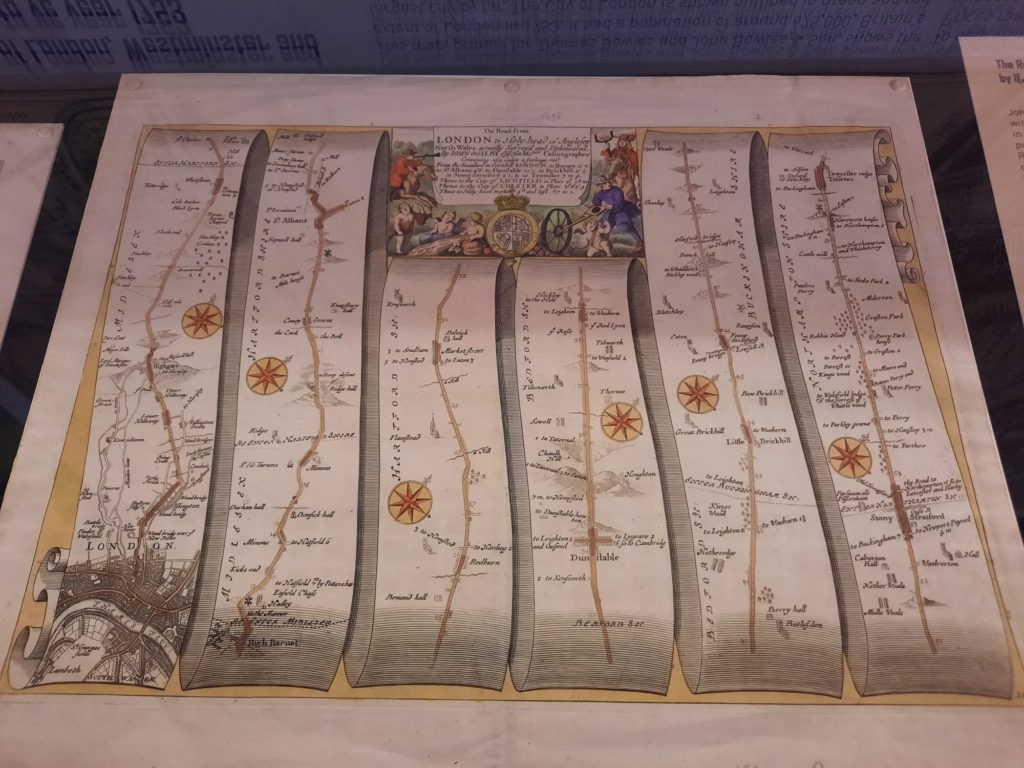
A Curator’s Tour
As I mentioned earlier, one of the attractions of the London Metropolitan Archives’ weekend opening, aside from actually being able to get in and see their exhibition, was that the visit came with a curator’s tour of the exhibition and a behind the scenes tour of the archives. We began with the curator’s tour. The staff of the London Metropolitan Archives are apparently so modest that I can’t find the name of the staff member who led our tour. But suffice it to say that she brought to life many of the maps on view. Plus explained the intentions behind bringing these examples together. I got a lot more out of the exhibition this way than I would have on my own.
We also had some free time to wander before and after the tours. And a thought struck me about how we interact with maps. There is something very human about wanting to locate yourself, and find the sites of geographical interest. For instance on the older maps I was interested in finding Wapping, where I previously lived, and Telegraph Hill, where I live now. The latter is “Plow’d Garlick Hill” on older maps – an interesting contrast with its mostly Edwardian appearance today.
Magnificent Maps of London also indulges this instinct. The first few items on view on the staircase are maps of London over time, zoomed into Clerkenwell. In all but the first you recognise the sweep of the streets you came around on your way here. It’s a nice connection to centuries of history, and a reminder that earlier centuries still echo in London today.
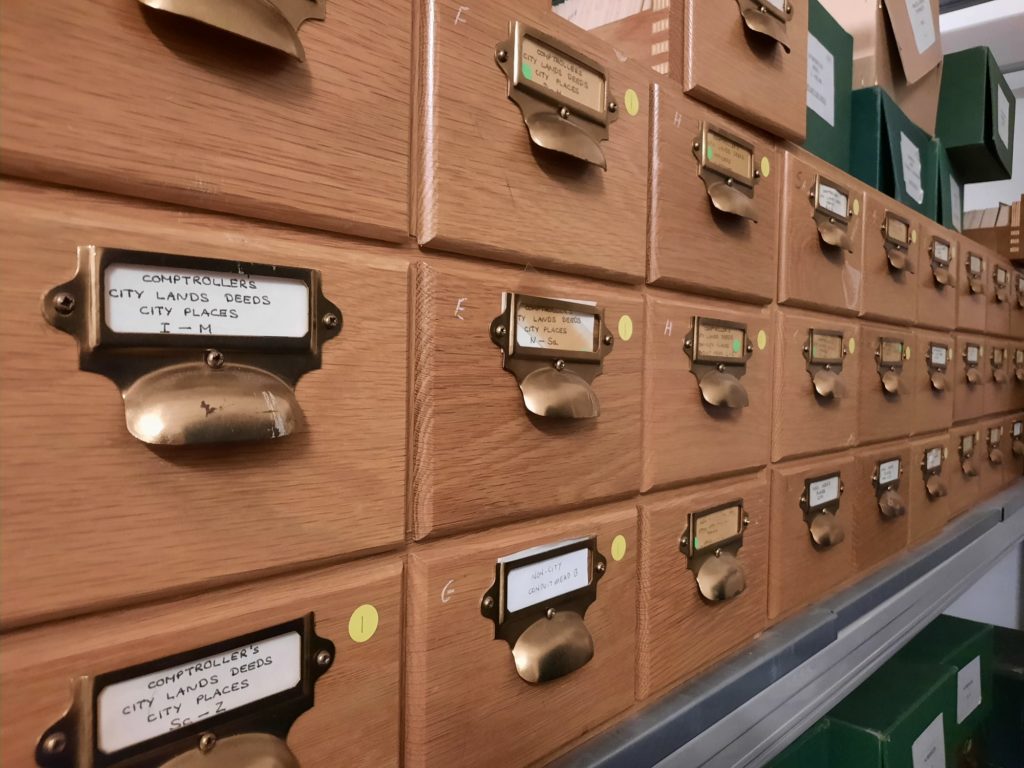

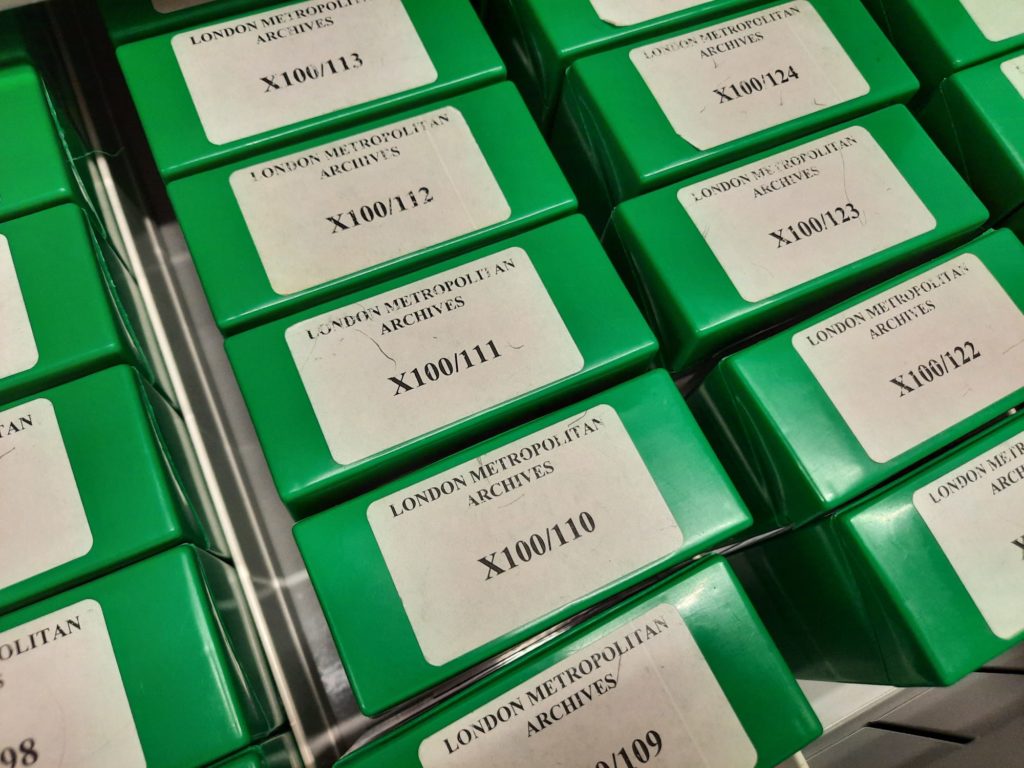
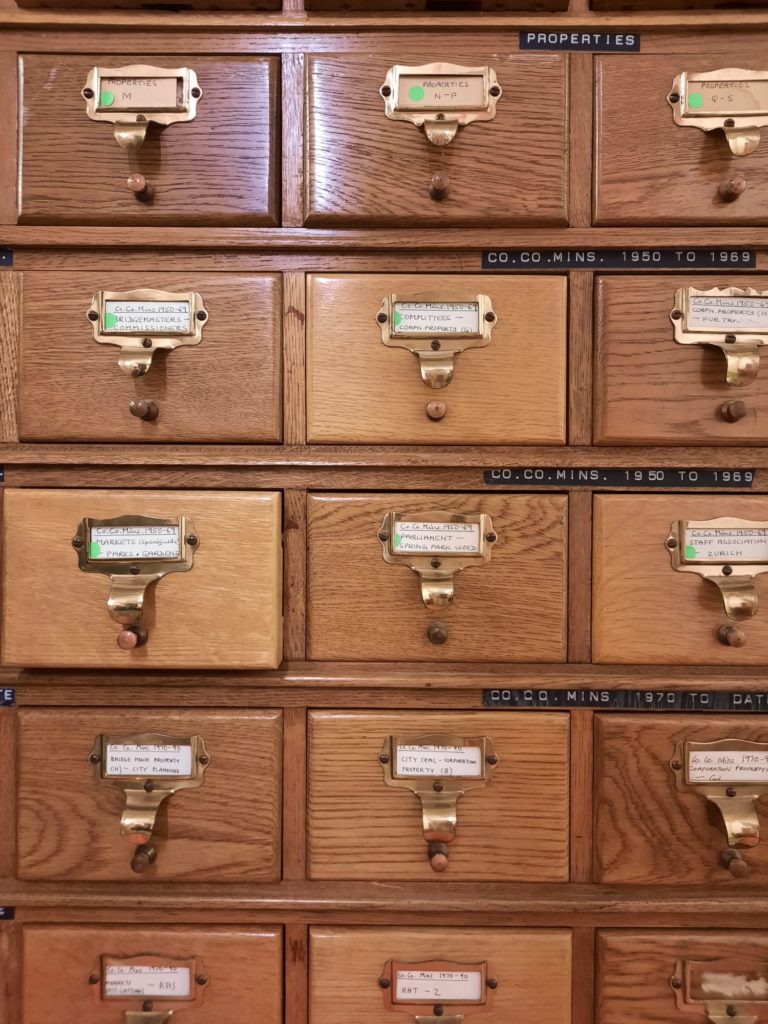
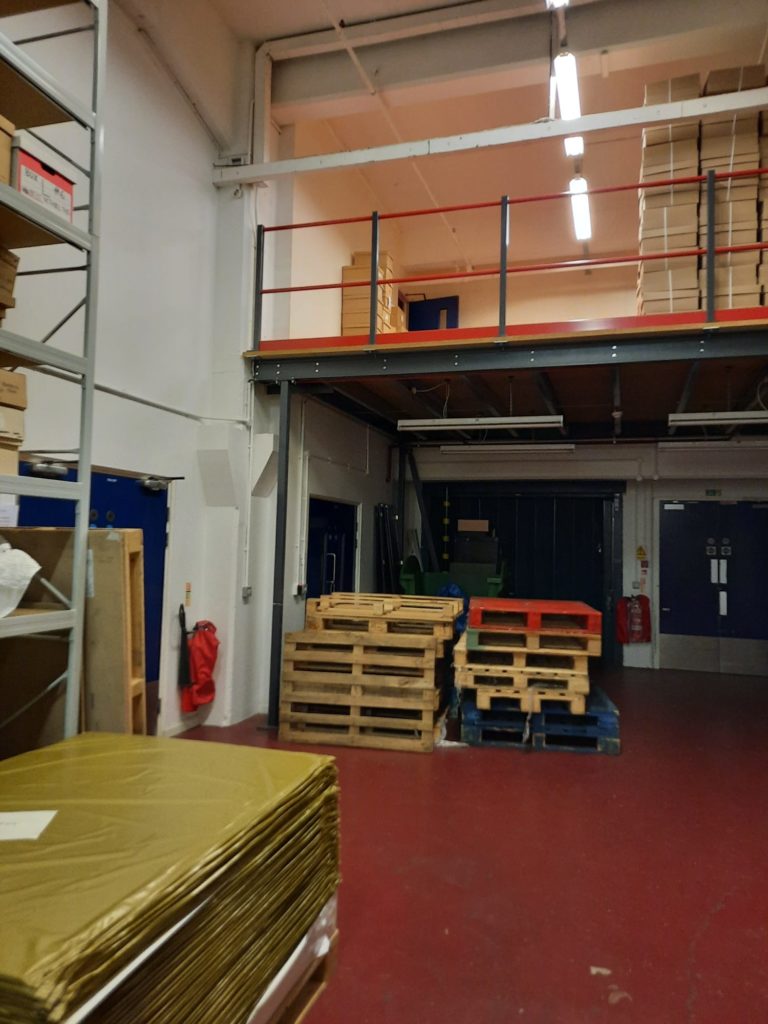
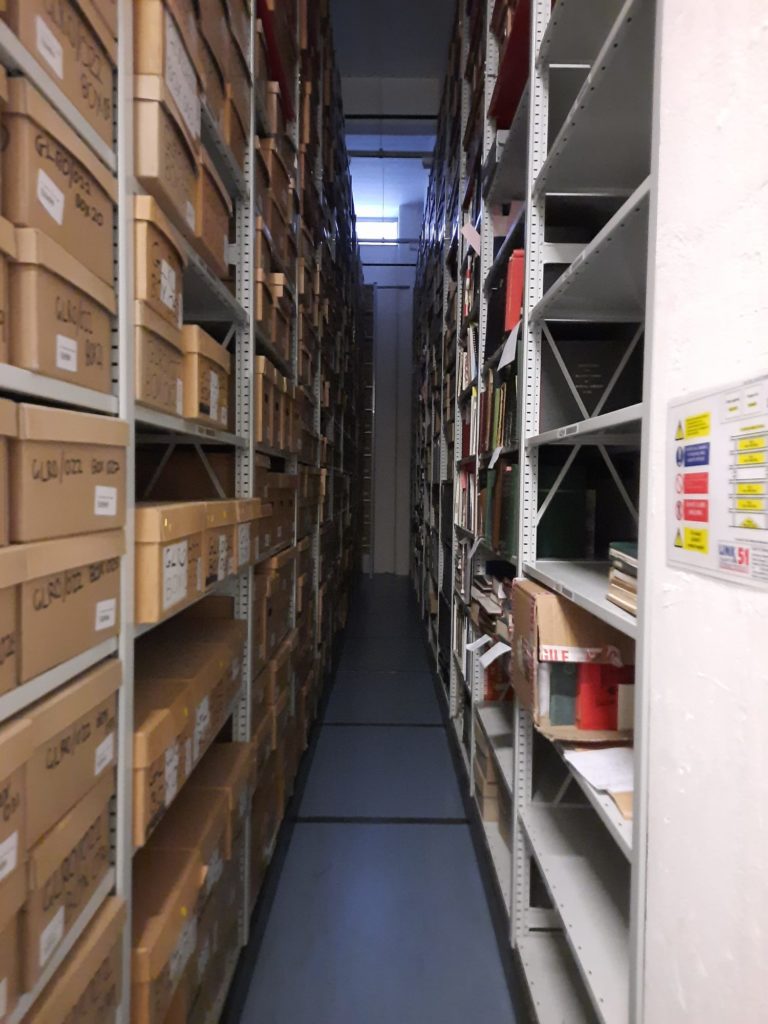
Behind The Scenes
The final component of our morning at the London Metropolitan Archives was a behind the scenes tour of the archive itself. In under an hour we covered information about what’s in the collection, how it’s stored, and how to access it. It reminded me of doing internships and work experience in museums and galleries during my museum studies Masters programme – the excitement of what could be in each box vs. the mundanity of 90% of the stuff in there. The racks of materials, and the number of rooms, are both huge. And there’s something quite comforting about seeing all the card catalogues and microfiche. Old technologies now but still hanging on.
The London Metropolitan Archives are a great resource for researchers, whether in a professional or personal capacity. Our tour concluded with some information on two which I will share with you here:
- London Picture Archive: more than 250,000 historic images, including some thematic galleries
- Layers of London: a little unwieldy, but a great historic resource which maps the past onto the present day
So that concludes this post. If you are able to visit during normal hours or spot another weekend opening, the London Metropolitan Archives are a quirky place to spend a couple of hours. Best for museum, library or archive enthusiasts, and quite nice when followed by a beer and a chat at a local Clerkenwell pub.
Salterton Arts Review’s rating: 3/5
Magnificent Maps of London: 3.5/5
Magnificent Maps of London on until 26 October 2022
If you see this after your page is loaded completely, leafletJS files are missing.

